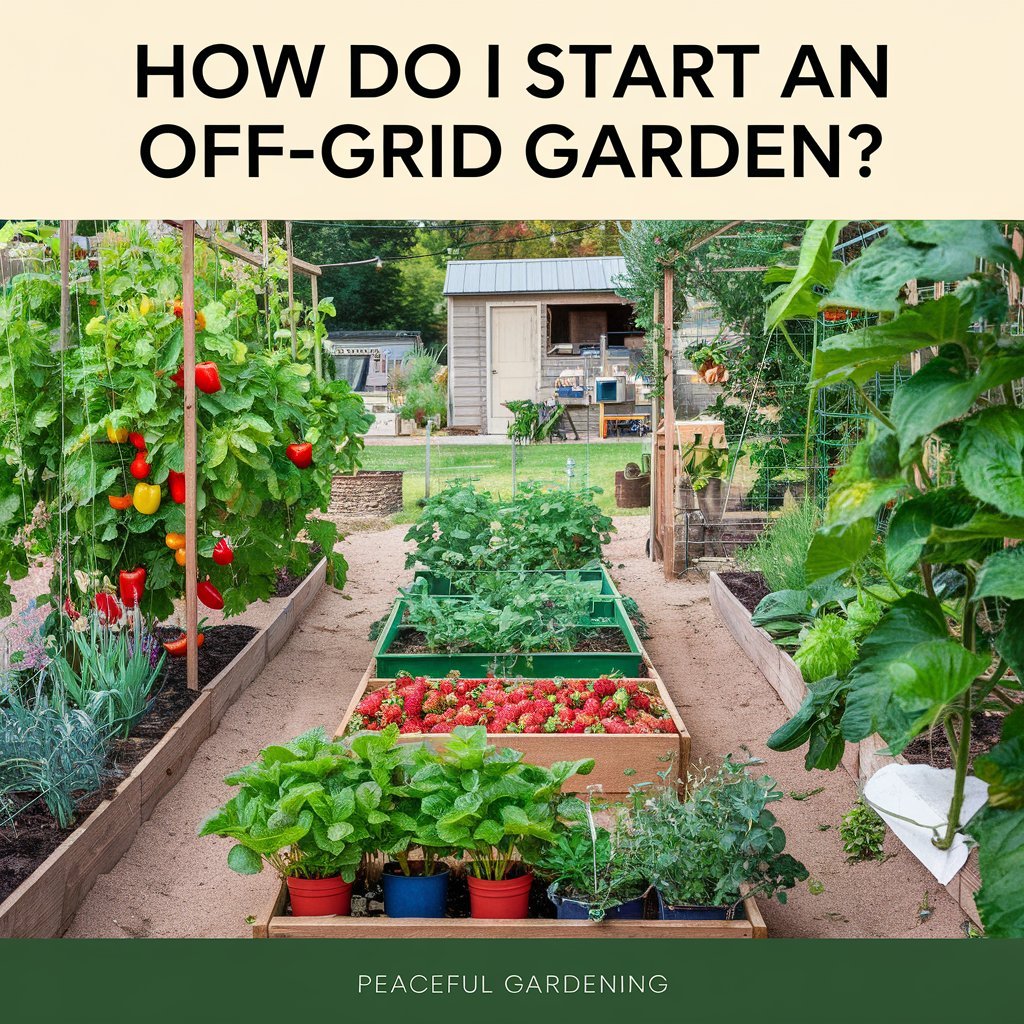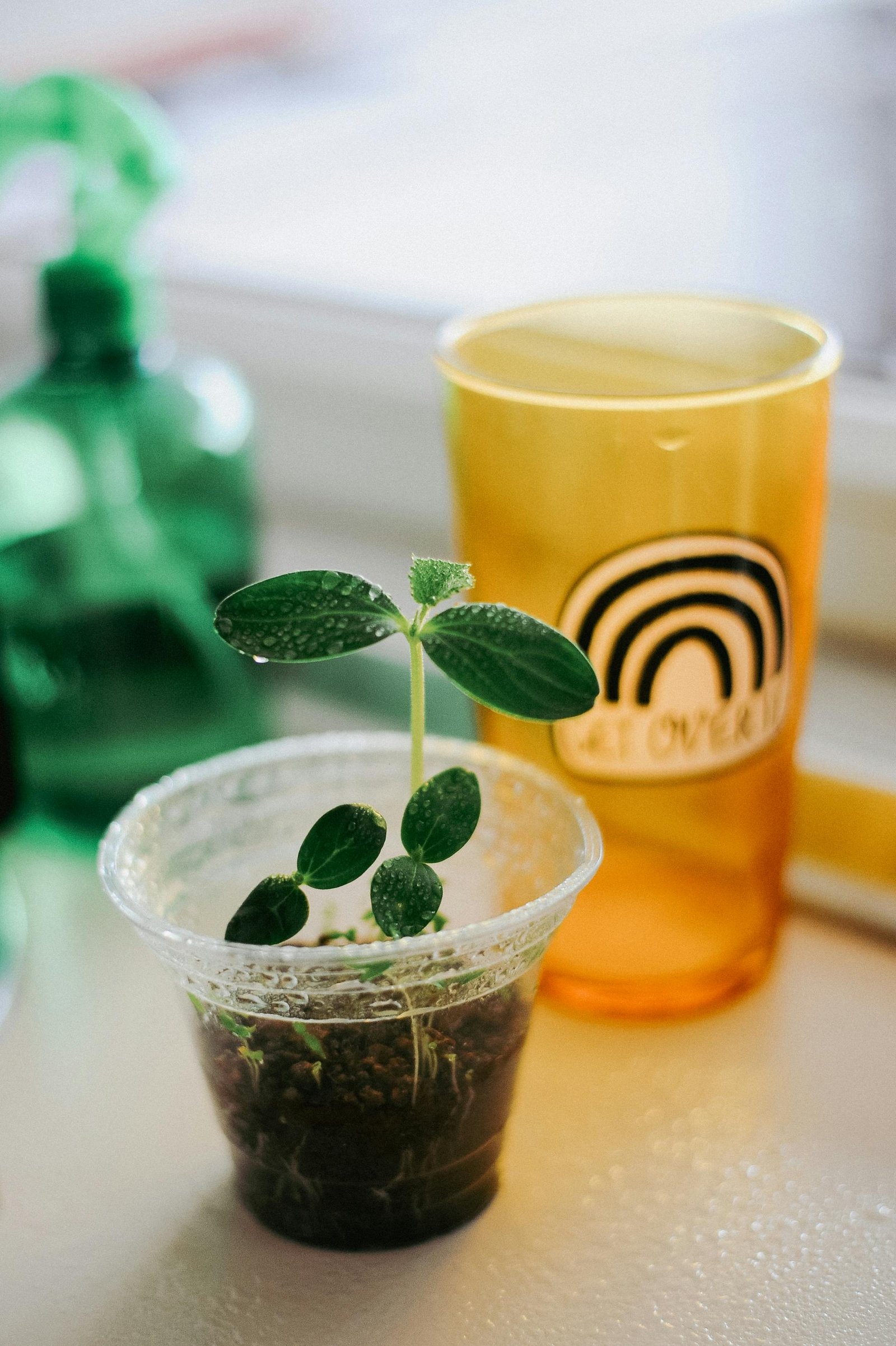Key Takeaways
- Getting acquainted with the fundamentals of self-sufficient gardening is crucial for beginners.
- Organizing your self-sufficient garden is key to successful cultivation.
- Necessary equipment and materials are vital for efficient self-sufficient gardening.
- Choosing the right flora for your self-sufficient garden enhances growth and yield.
- Implementing eco-friendly methods is important for sustainable self-sufficient gardening.
- Establishing your independent outdoor space is essential for growing your own food.
- Regular upkeep of your self-sufficient garden is necessary for healthy plants.
How Do I Start An Offgrid Garden? | Understanding the Basics of OffGrid Gardening
Starting an off-grid garden involves understanding the fundamental principles of off-grid living and sustainable gardening practices. Off gridders seek to cultivate their own food sources while living away from traditional utilities, which is essential for achieving self-sufficiency. To begin, aspiring gardeners should consider the basics of grid planning and select a suitable location that receives ample sunlight. Understanding the specific climate and soil conditions will help in choosing the right garden plants, from vegetables to herbs. Well-planned gardening techniques can ensure bountiful yields, making the question “How do I start an off-grid garden?” a cornerstone of successful off-grid living. With careful preparation and knowledge, anyone can create a thriving off-grid vegetable garden that contributes to their independence from the grid.

How do I start an offgrid garden? | Definition of OffGrid Gardening
Off-grid gardening refers to cultivating plants without reliance on conventional utilities or external systems, allowing gardeners to operate independently. This approach emphasizes sustainable methods such as no-dig gardening, which minimizes soil disturbance and promotes healthy ecosystems. Off-grid gardens can include various types like vegetable gardens, rain gardens, and yard gardens that aim to use resources efficiently. For anyone asking, “How do I start an off-grid garden?” understanding the principles of self-sufficiency and environmental stewardship is key.
Establishing an off-grid garden requires careful planning and knowledge of sustainable practices. A gardener can utilize water-wise gardening techniques to enhance resource conservation while ensuring optimal plant growth. By integrating eco-friendly systems into the design, such as rainwater collection for irrigation, individuals can create productive gardens in their lawns or yards. This holistic approach not only aids in producing fresh produce but also fosters a deeper connection with nature, leading to a more gratifying gardening experience.
Benefits of OffGrid Gardening
Off-grid gardening offers a path toward self-sufficiency and sustainability. Gardeners can embrace the freedom of growing their own food without relying on the electrical grid. Whether starting with container gardens or transforming a backyard into a market garden, the possibilities are endless. By nurturing plants in rich potting soil and focusing on maintaining healthy top soil, gardeners create their own garden of Eden. This practice not only provides fresh produce but also fosters a deep connection to the land.
The benefits extend beyond just food production. An off-grid garden can enhance mental well-being and promote a lifestyle grounded in nature. Incorporating various plants, including shrubs and other greenery, diversifies the ecosystem while improving crop resilience. This approach to farming encourages a balance between cultivation and nature, reminding gardeners of the importance of sustainability. How do I start an off-grid garden? Simple steps can lead to a fruitful endeavor filled with personal fulfillment and environmental stewardship.
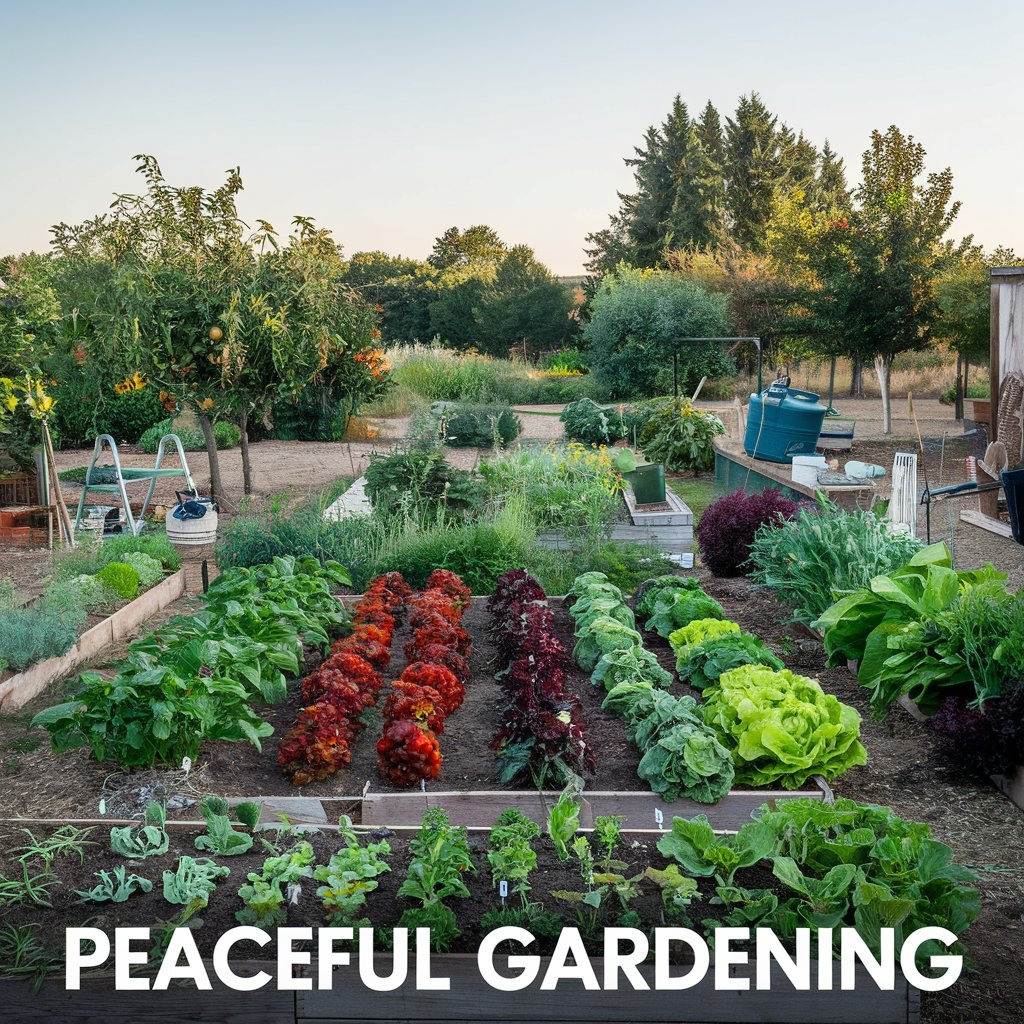
Planning Your OffGrid Garden
Creating a successful off-grid garden begins with careful planning, addressing essential questions like, “How do I start an off-grid garden?” An ideal location is vital, as it ensures access to sunlight and proper drainage, which are crucial for healthy vegetation. Soil quality assessment follows, allowing you to determine if amendments are needed to support a diverse range of plants. Incorporating crop rotation is key to maintaining soil health and maximizing yields, as rotating crops can prevent the depletion of specific nutrients and deter pests, a significant advantage over industrial farming methods. By understanding how to rotate crops effectively, you will foster a more sustainable and productive garden environment, paving the way for bountiful harvests season after season.
Choosing the Right Location
Finding the right location for your off-grid garden is crucial to ensure successful cultivation and harvesting. Look for areas with good soil structure that allow seeds to be planted easily. Consider the proximity to essential resources like water and sunlight. Locations near driveways or patios can be convenient, but be mindful of the potential impact on soil health due to foot traffic. If you have the space, a greenhouse can provide an excellent environment for nurturing your plants, especially in harsher climates.
Assessing the surrounding landscape will also play a vital role in your garden’s productivity. Areas clear of tall grass or overhanging branches are preferable, as they minimize competition for sunlight and water. Ensure the space you choose is sheltered from strong winds and provides protection for your plants. The right location will support your efforts and enhance the overall success of your off-grid farming experience. Understanding how do I start an off-grid garden? requires careful consideration of these factors for optimal growth.
Assessing Soil Quality
Understanding soil quality is crucial for successful off-grid gardening. A healthy, nutrient-rich soil can significantly impact the yield and resilience of your plants. Start by digging a small hole in your intended garden area to get a better sense of the soil texture and its composition. Is it sandy, clay-like, or loamy? Each type affects water retention and drainage in different ways. Knowing how do I start an off-grid garden involves assessing these qualities to create the best growing environment possible.
Conducting a simple soil test can provide valuable information on pH levels and nutrient content. Home testing kits are readily available and can help determine what amendments, such as compost or fertilizers, may be needed for your off-grid garden today. Understanding the specific soil requirements of the plants you’re intending to grow is essential for successful off-grid gardening efforts. Proper soil assessment helps ensure that your grid gardening will flourish, yielding healthy crops in your off-grid gardens.
| Soil Type | Texture | Water Retention | Nutrient Content | Best Use |
|---|---|---|---|---|
| Sandy | Grainy | Low | Low | Root vegetables, heat lovers |
| Clay | Sticky | High | High | Heavy feeders, moisture-loving plants |
| Loamy | Soft, crumbly | Moderate | Balanced | Most vegetable and flower gardens |
| Silty | Smooth | Moderate | Moderate | Greens and leafy vegetables |
Essential Tools and Resources for OffGrid Gardening
Starting an off-grid garden requires careful consideration of essential tools and resources, especially to ensure a successful gardening setup. Off-grid gardeners encounter unique challenges that differ from traditional grid gardening cases, which is why selecting the right equipment is crucial. Tools that facilitate off-grid cultivation—such as hand-powered tillers, solar-powered irrigation systems, and composting units—can significantly enhance the efficiency and sustainability of a grid survival garden. Understanding how do I start an off-grid garden involves not just choosing plants but also equipping oneself with the right resources to thrive in an off-grid environment. By investing in these essential tools, aspiring grid gardeners can create flourishing green spaces that embody the off-grid option for sustainable living.
MustHave Tools for Garden Setup
Starting an off-grid garden requires a unique set of tools tailored to your specific off-grid endeavors. For any aspiring gardener pondering, “How do I start an off-grid garden?”, it’s essential to invest in basic hand tools such as shovels, hoes, and trowels. These tools are vital for preparing your gardening ground, especially in a small garden or larger scale garden. While power gardening tools can expedite certain tasks, they may not always align with an off-grid philosophy. Focusing on manual, sustainable methods can also connect you more deeply to your at-home garden.
A well-chosen toolkit will also support your gardening method and adapt to your gardening zone. If you’re planning to design a backyard garden, consider incorporating lightweight, portable solutions that allow for flexibility in your garden layout. For a grid house or a more rustic setting, tools that promote efficiency and sustainability can make a significant difference. Whether you’re cultivating a small garden, a larger scale garden, or exploring vertical gardening solutions, the right tools will enhance your experience and productivity while you navigate the question, “How do I start an off-grid garden?”
OffGrid Garden Resources for Beginners
Beginning an off-grid garden requires access to the right resources to ensure success. Knowing how to start an off-grid garden involves researching essential gardening tools that can facilitate planting and maintenance without dependence on external power sources. Local garden centers are excellent places to find compatible tools that align with your vision for a productive garden. Opt for tools that are durable and suitable for your specific environment, as these will help make your own garden thrive even in remote areas.
For those venturing into off-grid gardening, understanding various methods and systems can significantly improve your output. A gardening solar power system can provide an eco-friendly way to power necessary equipment. Online forums and community resources can offer insights and advice for your new garden. Connecting with other off-grid gardeners can help you learn best practices, making your garden pretty and functional, while addressing questions like how do I start an off-grid garden? By tapping into these resources, you can enhance your skills and grow a flourishing gardening experience.
| Resource Type | Description | Where to Find |
|---|---|---|
| Gardening Tools | Durable tools suitable for planting and maintenance | Local garden centers, online stores |
| Solar Power Systems | Eco-friendly power solutions for gardening equipment | Garden supply retailers, online marketplaces |
| Online Forums | Communities for sharing tips and experiences | Gardening websites, social media groups |
| Books & Guides | Informative resources on off-grid gardening | Bookstores, libraries, online platforms |
| Workshops | Hands-on learning experiences with experts | Local gardening clubs, community centers |
Selecting Plants for Your OffGrid Garden
Choosing the right plants is essential for any off-grid garden, as it directly impacts the success of your cultivation efforts. To begin, understanding your grid location needs and the specific climate conditions in your area is vital. Assessing garden soil quality will help determine which plants will thrive in your garden patch. Off-grid homesteads often rely on a selection of hardy, drought-resistant varieties that can withstand the challenges of wilderness off-grid living. Exploring companion planting techniques can maximize yields, especially in large-scale gardening projects where space is limited. To effectively answer the question, “How do I start an off-grid garden?” consider using off-grid technologies such as composting and natural pest control to support your plant choices within the garden layout.
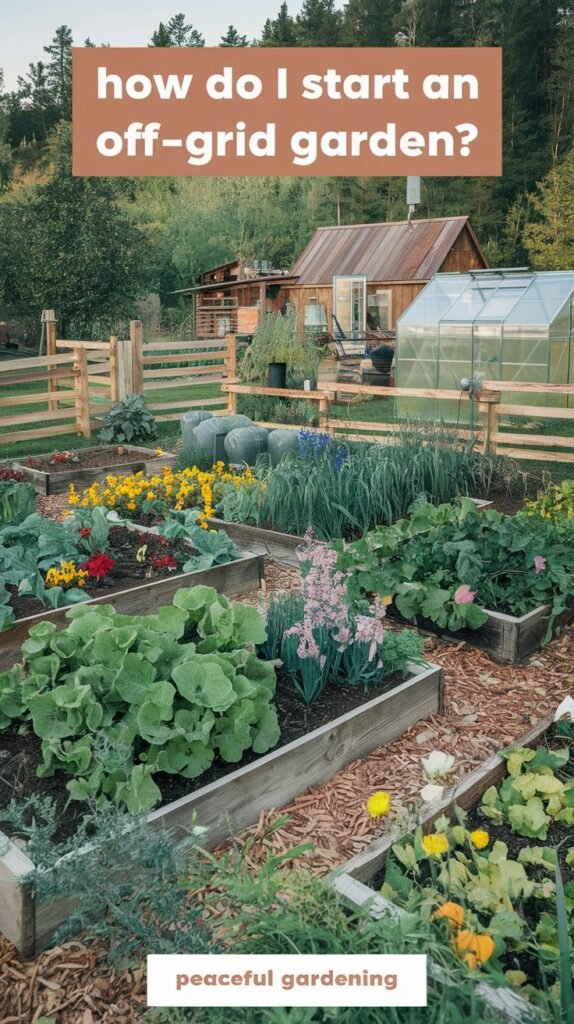
Considering Climate and Growing Conditions
Understanding your local climate is crucial for successful off-grid gardening. Different regions have varying temperature ranges, precipitation patterns, and seasonal changes, all of which affect plant growth. How do I start an off-grid garden? Begin by researching your area’s hardiness zone to select plants that thrive in your specific conditions. Incorporating features like a gardening self-watering mini-greenhouse can help regulate temperature and moisture levels, ensuring a self-sustaining garden that reduces water dependency.
Different grid locations offer unique growing conditions that can impact your selection of plants. For instance, a grid home design that focuses on maximizing sunlight exposure can enhance growth in a gardeninginground greenhouse setup. Embracing diy garden projects like rainwater collection systems or shaded areas for delicate plants can also support a thriving garden. Understanding factors like soil types and microclimates within your grid farmstead will contribute to successful gardeninginground projects.
- Research your area’s hardiness zone for optimal plant selection.
- Consider local temperature extremes when choosing your garden layout.
- Utilize natural sunlight by positioning your garden strategically.
- Experiment with container gardening for flexibility in plant placement.
- Implement water-saving techniques like drip irrigation or rainwater harvesting.
- Create shaded spots for sensitive plants to thrive.
- Regularly monitor and amend soil health to support diverse crops.
Companion Planting for Better Yields
Companion planting is a key technique for maximizing yields in off-grid gardens. This method involves growing different plants in close proximity to enhance growth and deter pests. For those asking, “How do I start an off-grid garden?” understanding the benefits of companion planting can significantly contribute to a thriving garden. Gardeners can utilize this practice to create a harmonious ecosystem within their grid property. By carefully selecting plant pairs, you can minimize the need for chemical interventions, making it ideal for those embracing grid homesteading and off-grid living.
Choosing the right companions can also improve the efficiency of resource use, particularly in low water gardening scenarios. Certain combinations help in optimizing garden space and ensuring that plants support each other’s growth. For example, planting tomatoes alongside basil is known to enhance flavor and repel harmful insects. With companion planting, you can take significant steps toward a successful garden, aligning with gardeningit principles. Cultivating a diverse array of plants encourages a more resilient and productive environment, essential for any aspiring gardener exploring gardeningroll methods.
Sustainable Practices in OffGrid Gardening
Off-grid gardening requires a unique approach that aligns with an off-grid lifestyle, enhancing sustainability and self-sufficiency. To embark on this journey, understanding how to start an off-grid garden is essential. For aspiring gridders, adopting practices such as strategic garden placement, which maximizes sunlight and water usage, is crucial for cultivating a healthy garden. New garden space can be optimized through methods like backyard vertical gardens, which help in maximizing yield even in limited areas. For those transitioning from grid dwellings to a grid homestead, integrating these sustainable practices not only supports off-grid life but also contributes to a thriving ecosystem within their gardeninghow endeavors.
Water Conservation Techniques
Understanding how to effectively conserve water is crucial for anyone asking, “How do I start an off-grid garden?” Implementing rainwater harvesting systems can dramatically reduce reliance on municipal water sources. By redirecting water from rooftops or setting up a low-tech greenhouse, you can capture precious moisture. Positioning your vibrant home garden at a slight angle to allow runoff to flow downhill can maximize water collection. Utilizing techniques like gardening guerilla gardening encourages planting in strategic locations to make the most of natural rainfall.
Effective irrigation techniques enhance water conservation efforts in the homestead garden. Drip irrigation systems deliver water directly to the roots, minimizing evaporation and waste. Mulching around plants helps retain soil moisture and reduces the need for frequent watering. Gardening ladybugs can also contribute to a healthy ecosystem, aiding in pest control without the need for chemical treatments that can deplete water resources. Exploring options such as desalination for freshwater access or incorporating energy-efficient methods can further streamline your off-grid gardening journey.
Natural Pest Control Methods
Effective natural pest control methods are essential for maintaining a healthy off-grid garden. Novice gardeners often wonder how do I start an off-grid garden? Utilizing techniques such as companion planting and introducing beneficial insects can drastically reduce the need for synthetic pesticides. For grid homesteaders relying on traditional gardening methods, these practices align well with sustainable values. By embracing a holistic approach, you can protect your vegetable garden while minimizing reliance on on-grid solar and grid water systems for pest management.
Integrating various strategies into your gardening tasks can yield significant results. Creating a homemade wood compost bin encourages the proliferation of helpful microorganisms that naturally deter pests. For those engaged in gardeningmake, understanding the local ecosystem and its natural predators will enhance your overall approach. As grid solar and water systems become less relevant in your off-grid lifestyle, focusing on natural solutions allows for a more resilient vegetable garden that thrives without chemical inputs.
Setting Up Your Grid Backyard
Creating a successful off-grid garden in your backyard involves careful planning and innovative solutions. First, determine how do I start an off-grid garden by considering the layout of your gardeningbackyard, ensuring you allocate space for gardeningbackyard garden boxes and a self-sufficient rain garden. Incorporating vegetable gardens indoors can extend your growing season and provide fresh produce year-round. Emphasizing sustainable practices such as compost crops and utilizing a grid pump for water needs will enhance your garden’s efficiency, even when managing heavy gardening tasks. Gardeningrocket can be a valuable resource for tips and techniques that support a flourishing off-grid environment while answering the question, how do I start an off-grid garden?
Designing Your Garden Layout
Creating an effective layout is key to successful off-grid gardening. Understanding how do I start an off-grid garden involves considering factors like space and sunlight. For instance, integrating an aquaponic garden can maximize your yield while utilizing limited resources. When planning, think about your grid living setup and how grid wind turbines can reduce your energy needs. Strategically placing gardeningdiy wooden plant boxes can conserve space and facilitate easy planting, ensuring that over-watering plants is minimized.
Organizing your garden layout also enhances accessibility to essential resources. Arranging your plants in a way that promotes efficiency, such as using garden stores for inspiration, will help streamline your gardening process. Consider positioning your gardeningthe plants so that they benefit from companion planting techniques. A well-planned design allows for easy maintenance while implementing tools like gardening slug traps to manage pests, aligning with the principles of gardeningsimple and sustainable practices.
Incorporating Vertical Gardening Solutions
Vertical gardening offers a solution for off-grid gardeners looking to maximize limited space while enhancing their gardening experience. How do I start an off-grid garden? Begin by designing tiered structures that can hold a variety of plants, such as a gardening tiered herb garden, which adds both functionality and aesthetic appeal. Vertical setups not only conserve space but also elevate plants away from common gardening insects that may damage your crops. This method can transform your grid cabin backyard into a vibrant oasis, showcasing beautiful garden art while promoting efficient growing.
Container gardening is another vital aspect of vertical gardening that aligns well with the off-grid lifestyle. By utilizing pots or vertical planters, gardeners can create a dynamic growing environment that optimizes sunlight and water usage. This approach is especially beneficial for grid dwellers, who may face space constraints in small backyards. As the gardening season progresses, implementing these solutions will enable you to cultivate more diverse plant varieties, ensuring a bountiful harvest while minimizing the environmental impact.
Maintaining Your OffGrid Garden
Effective gardening requires a solid understanding of techniques like crop rotation and seasonal care. For those asking, “How do I start an off-grid garden?” focusing on the rotation of starter plants can enhance soil health and yield. Using resources such as gardeningguerrilla can provide valuable insights into gardening seeds suited for your climate. Integrating systems like aquaponic gardens or an off-grid chicken setup can contribute to a more sustainable backyard. To maximize space, consider structures like a backyardwindow greenhouseby jprussack, which allows for optimal use of resources. Thoughtful planting plans will facilitate better management in combining various gardeningdiy methods. Whether using grid vehicles for transporting supplies or employing strategies from gardeningmy, consistent maintenance ensures a thriving off-grid garden environment.
Crop Rotation and Its Importance
Crop rotation is a crucial practice for both novice and experienced vegetable gardeners, especially for those exploring how do I start an off-grid garden? This method involves alternating the types of crops grown in a specific area each season, which helps to prevent soil depletion and reduces pest infestations. First time gardeners can easily implement this strategy in their space, whether it’s in a grid aquaponics system or a rustic backyard setup. By incorporating gardeningaquaponics techniques, such as those found in the waterwheel project, gardeners can optimize space and resources while enjoying healthier plants.
Implementing crop rotation also plays a significant role in the grid living movement, as it encourages sustainable practices that align with the principles of reuserural garden irrigation. By shifting plant families each year, gardeners can improve soil structure and fertility, which is especially beneficial for those interested in gardeninggrow mushrooms or other specialty crops. This approach not only enhances garden yield but also fosters a resilient ecosystem that thrives in an off-grid setting, making it a key component for anyone passionate about gardeningaquaponics.
- Crop rotation improves soil health by preventing nutrient depletion.
- It reduces the risk of soil-borne diseases and pests.
- Different crops can enhance soil structure and fertility.
- Rotating crops can lead to higher and more sustainable yields.
- It allows for a more diverse ecosystem, which can attract beneficial insects.
- Gardeners can better manage weeds by changing crop types.
- This practice encourages a more mindful approach to gardening and land use.
Seasonal Gardening Tips
Understanding seasonal gardening tips is crucial for maintaining a thriving garden, especially in the context of off-grid living. To achieve a successful garden, one should consider the specific growing conditions of their grid property. Planning your planting schedule around local climate conditions will help ensure that you maximize your garden space effectively. This approach ties in with low water gardening strategies, which can be particularly beneficial for those practicing grid homesteading.
Implementing techniques such as succession planting can lead to a more productive yield throughout the seasons. Resources like gardening it and gardening by provide valuable insights on what plants thrive at different times of the year. Learning how do I start an off-grid garden involves adapting to seasonal changes while also utilizing gardeningroll to track your progress. This will ensure you have a bountiful harvest that aligns with your off-grid gardening goals.
Conclusion
Starting an off-grid garden can be a transformative journey toward self-sufficiency. Individuals often wonder, “How do I start an off-grid garden?” The foundation lies in understanding the contrast between on-grid systems and off-grid practices. Implementing strategies like constructing gardeningbackyard garden boxes or a self-sufficient rain garden can significantly enhance your sustainability efforts. Heavy gardening techniques may be required for optimal yields, especially if you’re considering vegetable gardens indoors or using compost crops. Exploring resources like gardeningrocket can help you navigate the challenges of off-grid gardening as you design your backyard. Embracing these principles leads to a flourishing off-grid garden that thrives independently.
FAQS
What are some essential tips for how do I start an off-grid garden that can thrive without reliance on the grid?
To successfully create an off-grid garden, consider implementing a solar power system to maintain energy independence. You can incorporate a self-watering mini-greenhouse to ensure your seeds are properly nourished. Off-grid cultivation often involves planning a vegetable garden that can sustain your needs, while utilizing techniques like guerrilla gardening for efficiency. Remember, off-grid gardening doesn’t require intricate grid design; instead, focus on low-tech solutions to promote garden success, such as a homemade wood structure for support or utilizing natural pest controls like ladybugs to maintain a healthy ecosystem.
How do I start an off-grid garden for sustainable living, and what methods can I use for off grid garden management?
To successfully learn how do I start an off-grid garden, you should focus on techniques that promote off-grid cultivation. Consider implementing a solar power system to power essential tools and using rainwater collection for irrigation. Using self-watering mini-greenhouses can help manage moisture levels, while also allowing you to cultivate your vegetable garden effectively. Whether establishing grid survival gardens or engaging in guerrilla gardening, your goal should be to create a sustainable off-grid garden that thrives with methods such as aquaponics and tiered herb gardens to maximize space and resources.
What are the key steps to consider when I ask how do I start an off-grid garden in a self-sustaining way?
To start an off-grid garden, you’ll want to focus on various techniques to ensure your garden thrives off the grid. Consider integrating methods like gardening with a solar power system, utilizing a self-watering mini-greenhouse for efficient water use, and practicing aquaponics for sustainable cultivation. Additionally, think about incorporating polytunnels or tiered herb gardens—these can enhance your off-grid garden while maintaining self-sufficiency, allowing for a productive space that doesn’t rely on external resources.
What strategies should I consider when determining how do I start an off-grid garden?
To begin your journey into off-grid cultivation, it’s crucial to implement various strategies that suit your location and resources. Consider incorporating a solar power system to power essential garden tools and create a self-watering mini-greenhouse for efficient plant care. Utilizing vertical gardening techniques or a tiered herb garden can maximize space, and ensuring you have a good water source—like a waterwheel project or rainwater harvesting—will greatly benefit your off-grid garden. Don’t forget to include natural pest management like ladybugs and slug traps to maintain a healthy growing environment.
What tools and techniques can enhance my off-grid garden experience, especially with options like a homemade wood greenhouse or self-wicking rainwater system?
To enhance your off-grid garden experience, consider implementing tools such as a self-watering mini-greenhouse and a solar power system for energy needs. You might also explore off-grid cultivation methods like aquaponics, where you can utilize a waterwheel project for efficient water use. Additionally, incorporating tiered herb gardens or backyard vertical gardens can maximize your gardening space. It’s important to ensure your gardening strategies promote sustainability while allowing for a thriving vegetable garden.
What are some innovative practices I can implement to enhance my off-grid garden using techniques like solar power systems and self-watering mini-greenhouses?
To enhance your off-grid garden, consider incorporating a solar power system to provide energy for essential tasks. Implementing a self-watering mini-greenhouse can help maintain moisture levels in your garden, ensuring your seeds are planted successfully. The use of off-grid cultivation techniques can lead to a thriving vegetable garden, while also utilizing guerrilla gardening tactics to maximize your space. Additionally, incorporating elements such as a homemade wood greenhouse or tiered herb gardens can improve the overall efficiency of your gardening efforts.
How can I successfully implement an off-grid garden using techniques such as self-watering mini-greenhouses and solar power systems?
To successfully implement an off-grid garden that incorporates a self-watering mini-greenhouse and a solar power system, start by selecting a suitable location in your backyard that receives adequate sunlight. Ensure you plan your garden by considering the types of seeds you want to plant, as well as their water and sunlight requirements. Utilizing off-grid cultivation techniques, like installing a solar power system, can help with energy needs, while a self-watering mini-greenhouse can maintain moisture levels and protect your plants. Additionally, consider integrating features such as tiered herb gardens or vertical gardens to maximize space and promote biodiversity with beneficial insects like ladybugs.
What creative methods can I use alongside traditional techniques to enhance my off-grid garden, such as a homemade wood greenhouse, self-watering mini-greenhouse, or vertical gardens?
To enhance your off-grid garden, consider combining a homemade wood greenhouse with self-watering mini-greenhouses for efficient water management. Utilizing vertical gardens can maximize space in your backyard while also allowing for easier gardening. Additionally, incorporating a solar power system can provide energy for any tools you need. To create a thriving off-grid cultivation environment, you might also explore methods like guerrilla gardening and tiered herb gardens to diversify your gardening practices. Remember, every technique you use can contribute to a sustainable and productive vegetable garden.
How can I ensure my off-grid garden can thrive with methods like guerilla gardening or a homemade wood greenhouse?
To ensure your off-grid garden thrives, you might consider implementing guerilla gardening techniques alongside a homemade wood greenhouse. Off-grid cultivation has its challenges, but by utilizing innovative gardening methods—such as a solar power system for energy or a self-watering mini-greenhouse to maintain hydration in your vegetable garden—you can create a sustainable environment. Additionally, techniques like creating slug traps or incorporating ladybugs can help manage pests naturally, making your gardening both effective and eco-friendly.
What materials and plants are essential for building an efficient off-grid garden that harnesses techniques like guerilla gardening and vertical gardens?
To create a successful off-grid garden, key materials include a homemade wood greenhouse and a self-watering mini-greenhouse. Utilizing plants that thrive in your climate, along with methods such as guerilla gardening and backyard vertical gardens, enables off-grid cultivation. By incorporating solar power systems, you can enhance energy efficiency and effectively manage your off-grid garden. Additionally, consider integrating gardening techniques like slug traps and tiered herb gardens to optimize your gardening experience.
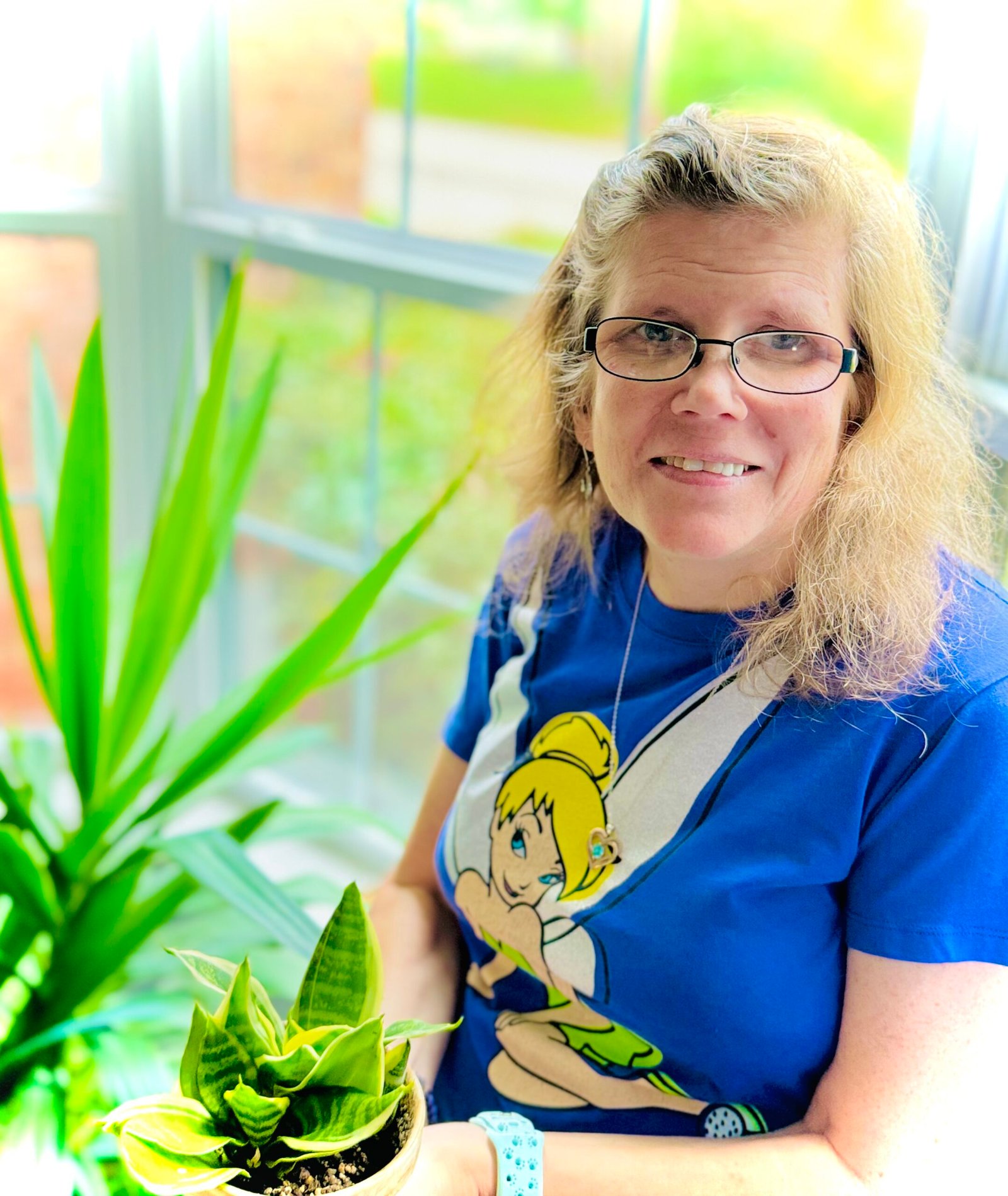
My name is Michelle Warren, and I’m the founder of Peaceful Gardening. As a 10-year breast cancer survivor, I’ve discovered the profound therapeutic power of gardening. This journey has not only helped me recover but has also become my passion and a source of ongoing peace and joy.
Peaceful Gardening was born from my desire to share the healing benefits of gardening with others. Whether you’re facing health challenges, dealing with stress, or simply looking to connect more deeply with nature, this space is for you.
Over the past decade, I’ve cultivated not just plants, but a deep understanding of how gardening can positively impact mental health. I’ve worked with local community gardens, led workshops on mindful gardening practices, and collaborated with mental health professionals to develop gardening-based stress reduction programs.
Peaceful Gardening was born from my desire to share the healing benefits of gardening with others. Whether you’re facing health challenges, dealing with stress, or simply looking to connect more deeply with nature, this space is for you.
Here, you’ll find evidence-based advice on using gardening as a tool for mindfulness, stress relief, and emotional healing. I share personal stories, practical tips, and scientifically-backed information on how to create your own therapeutic garden space, no matter the size of your yard or balcony.
My mission is to help you discover the joy, peace, and healing that comes from nurturing plants and connecting with nature. Join me in exploring how the simple act of tending to a garden can transform your mental and emotional wellbeing.
Welcome to Peaceful Gardening – let’s grow together towards better mental health!”

